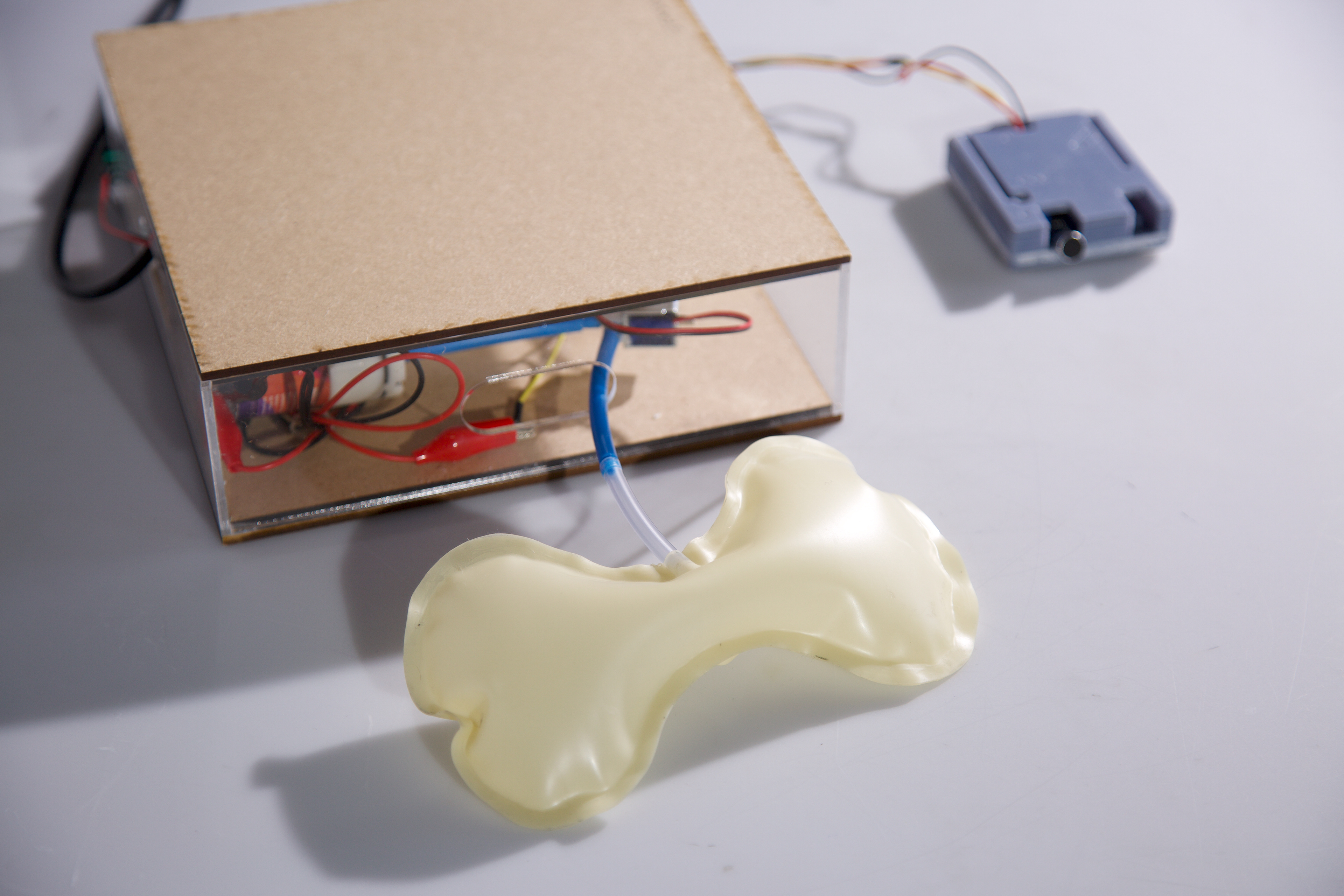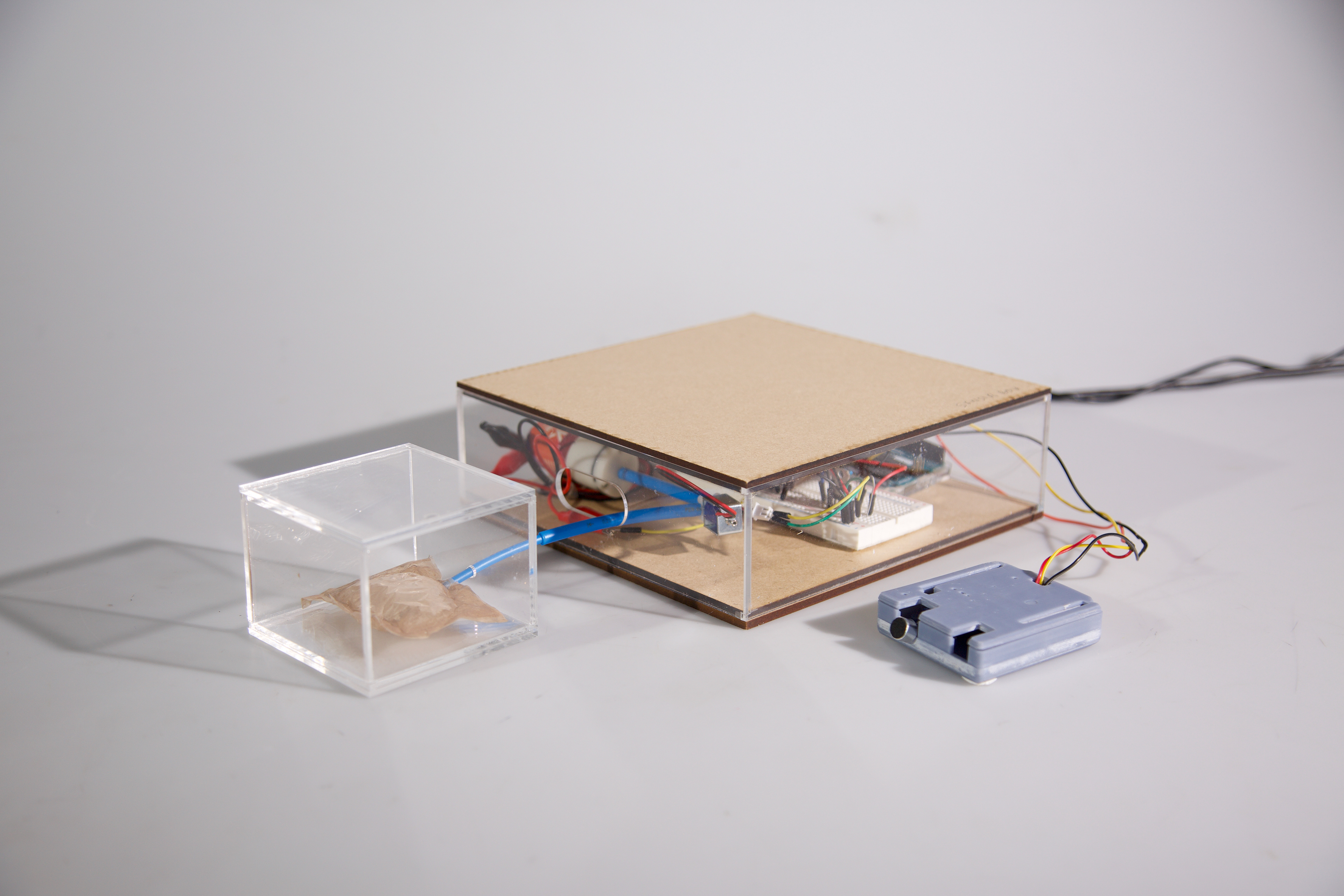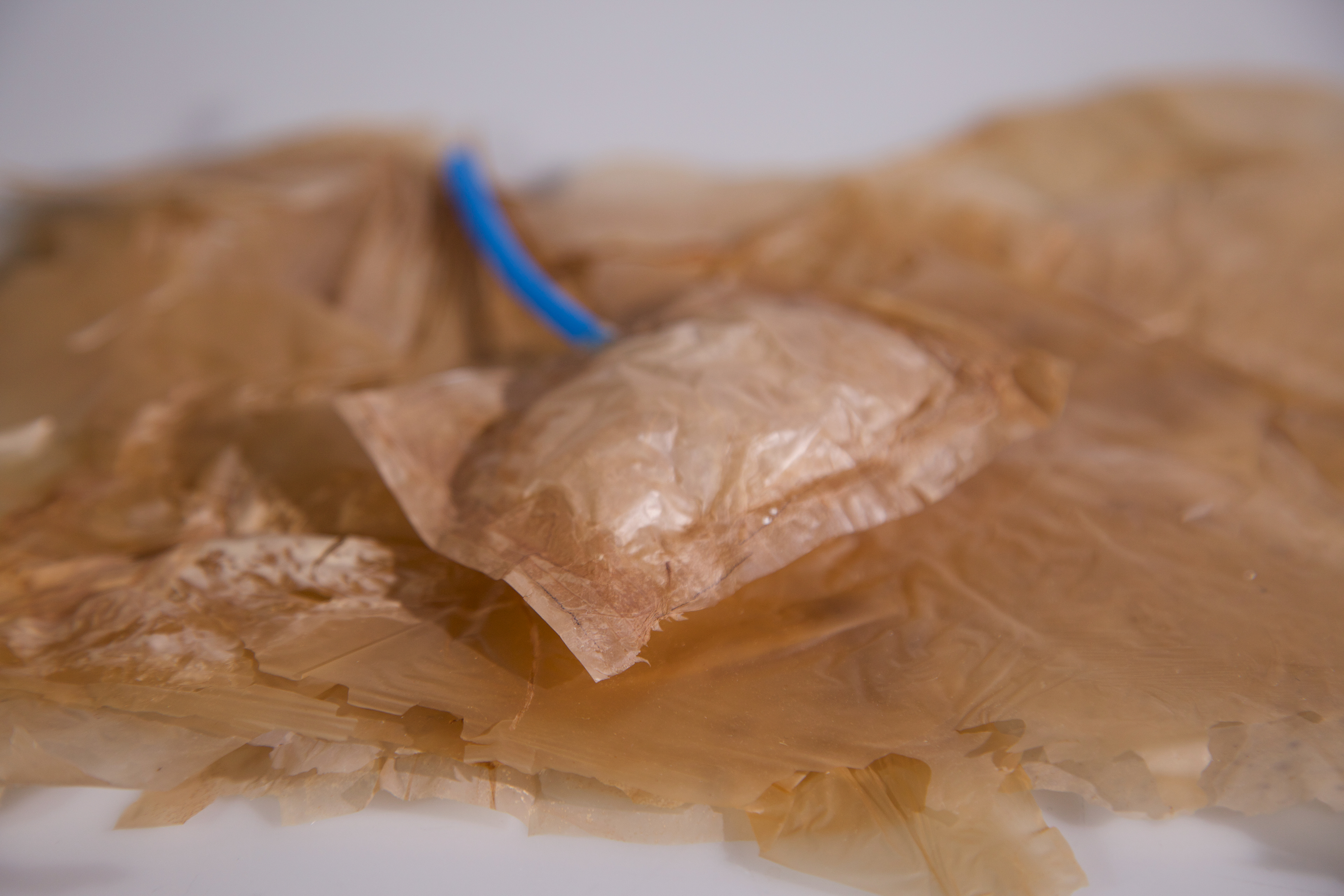

Some memories of childhood sleep sometimes come to mind: my grandmother gently patting me to sleep with the palm of her hand; me lying on my father's belly, feeling the softness of his skin as he breathed in and out before drifting off to sleep; or an even older, slumbering scene in a swaying cradle. What are these rhythms? It made me want to explore what the relationship is between these rhythms and our sensory experiences, the way we sleep and our brain memories.
As we grow older, sleep seems to become an increasingly difficult task. Have you ever tossed and turned late at night in a soft bed or a quiet bedroom? Has your brain become too excited by chores to concentrate on sleep? Why is it so easy to fall asleep in a noisy, bumpy car? In my recent experiments, I focused on converting the sounds collected in my life into different rhythms that simulate the ups and downs of breathing. People can feed the audio into this sleeping device and feel the 'breath of life' of this piece of furniture by falling asleep with it. For me, it is more of a tactile form of bedtime reading than just a sleep appliance, and through it I hope to tell and explore the story of the body and rhythm, evoking and healing the primal emotions of sleep.





To achieve better interaction, the biomaterial Scoby created a skin texture that was used, which was then programmed to transform a piece of auditory material into an undulating rhythm with a steady breathing rhythm.
In this prototype, the sleeping person feels the rhythm of the furniture and is able to awaken their experiences and memories from the day or from their past lives, exploring the amazing connections between the senses of hearing, memory and touch. At the same time, the biological material is constantly growing, in a sense it is alive, and when people interact they are soothed by the furniture of this material, even when their closest remembered ones are not with them.